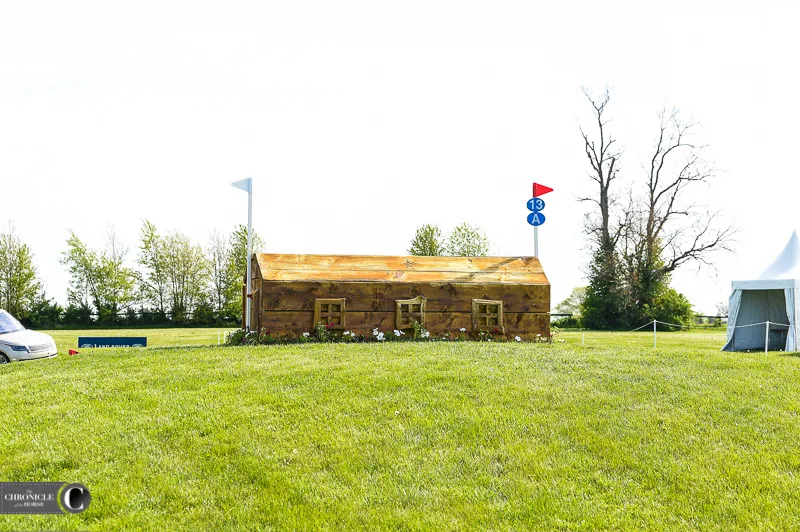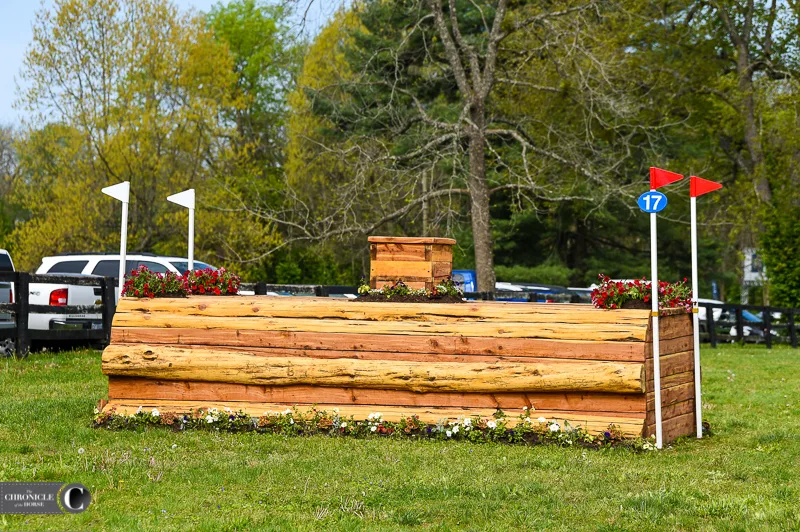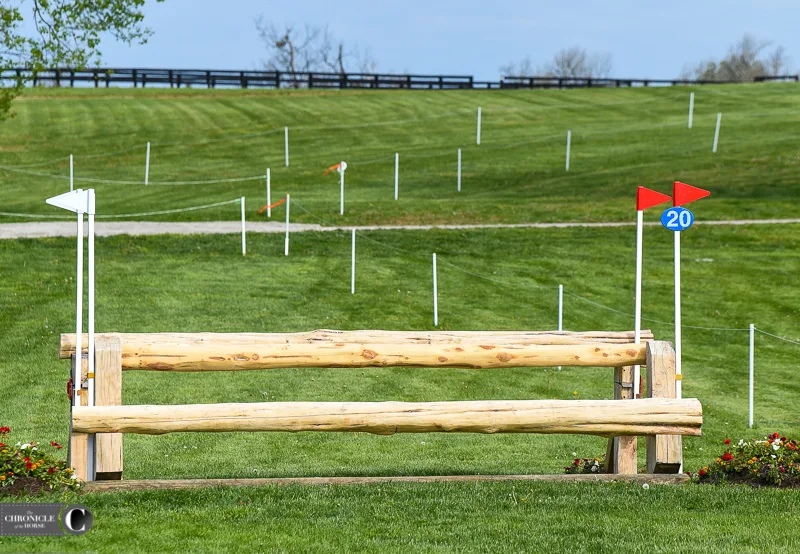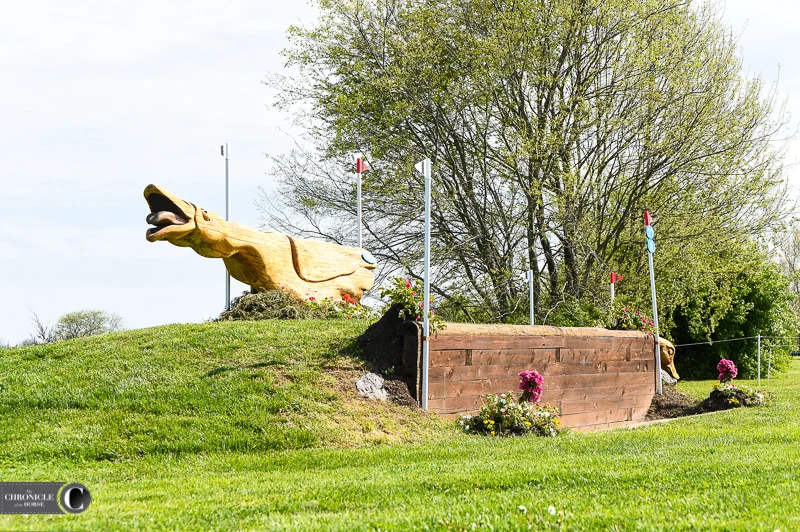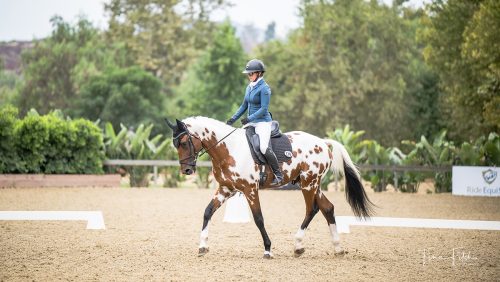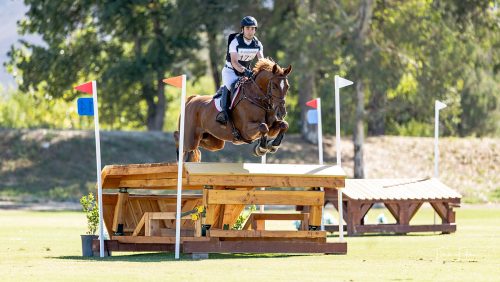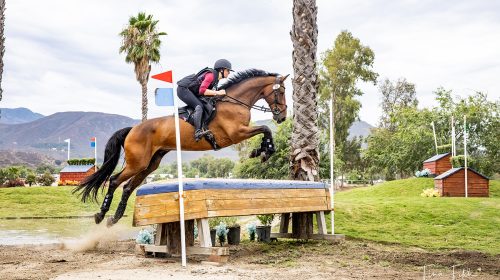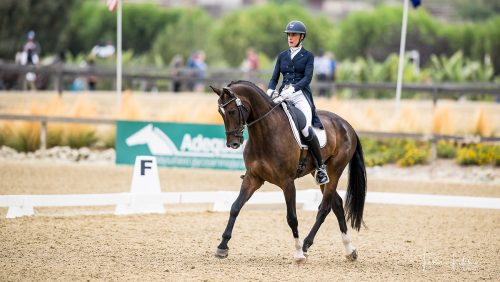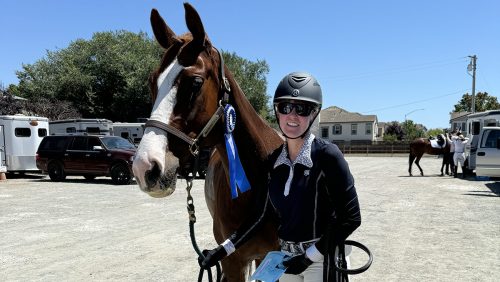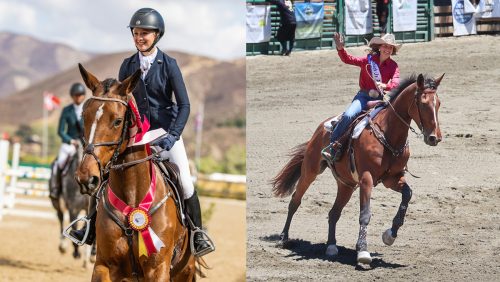Lexington, Ky.—April 29
Derek di Grazia has earned a reputation for designing deceptively difficult cross-country courses, and this year’s Land Rover Kentucky CCI5*-L is no different.
“Derek is very clever in how he manages to make something that doesn’t seem like it’s going to ride that hard ride really difficult, and that’s where the problems end up, so I think you just can’t ever let your guard down,” said Tamie Smith, who is leading the five-star with Fleeceworks Royal after the first day of dressage. “You’ve got to be super focused and make sure you’re ready.”
Olympian Doug Payne agreed, saying he doesn’t think there’s one bogey fence on course, but rather that there’s tough questions the whole way around the 11 minute, 4 second, course.
“Along with that, I think the way which it’s set, I think you’re going to see a whole lot of solutions to the same problem,” Payne said. “I think it’s going to require you to be super sharp and reactive and [be] more of an instinctive test than it is a mathematical calculation.”
Di Grazia’s course-building style harkens back older designs that require riders to think on their feet rather than account for every stride, Smith said.
“I think it’s going to be very reactionary, which I think the designers are starting to lean towards,” she said. “It used to be more of an accuracy type thing with how you jumped in, but I think now you don’t know how your horse is going to react to these terrain type questions, and you’ve got to have feel, and I think that’s what makes a good cross-country rider and a great cross-country course.”
Fence By Fence
The course starts and finishes in the same place as last year, beginning behind the stabling with three fences to help get riders into a rhythm before the first combination, Mars Sustainability Bay at 4AB. While it’s not the biggest combination on course, there’s a tailgate area there, so horses will arrive to plenty of atmosphere. Competitors will jump over a big log at 4A, land on a slope and make a left-hand turn through the water to jump a corner a few strides away from the water. Riders taking the direct route will tackle a left-handed corner, while those going the long route will negotiate a right-handed one.
Fence 5 is a picnic table that should be a nice galloping fence before the Triple Scoop at Fence 6, a triple bar with a ditch underneath it. The riders will be headed downhill here, so di Grazia cautioned that they need to be accurate and coming forward without leaving out a stride.
ADVERTISEMENT
Their next big challenge comes at 7ABC, the Park Question, a coffin which has appeared late on the course in previous years. The A element is rails with a MIM clip on the top rail to a ditch and out over a brush. There is an alternate route here, which allows riders to negotiate the rails on their own, lessening the risk of their horses looking at the drop-off and activating the MIM clip if they put their hind end down too early.
“From 4, the riders have been galloping fences, so they’re quite open in their stride now,” di Grazia said. “They come around the corner, and they’ll have to put their horses in a coffin canter so that they can come and jump over the rail and down the slope, over the ditch, then the brush on the left, which is the direct way. As they jump over that ditch, they need to make sure they keep the line to the brush jumping out, and also that they keep moving up that slope. I will be interested to see how the horses read this, especially early on in the course. I think you’re going to have to be on your game coming to this jump.”

A side view of 7ABC. The coffin combination will require riders to organize their horses after several open, galloping fences.
Next riders will gallop up the hill to the Fox Den at 8AB, which features a pair of stand brushes that can be ridden directly or on a bending line. After that they’ve got another large table at Fence 9. Fence 10 is the famous ditch and brush, which makes for impressive pictures but rarely causes problem.
At this point riders will turn left for the EEI Challenge Accepted at 11ABC. They’ll jump a cabin on top of the mound before jumping out over a pair of angled brushes—a test of accuracy and control.
They’ll have another breather, the Holyfield Oxer at Fence 12, as they set off for the furthest point of the course, Pete’s Hollow at 13ABC. The first fence is a cabin on the top of the hill, landing on a steep slope with a corner sitting two strides from the bottom of the slope. The final element is a narrow house set atop the slope exiting the Hollow.
“They have to keep their horses underneath them and feel what their horses are doing because then they have to make a decision of whether to hold to that corner,” di Grazia said of the steep downhill landing after the A element. “They’re going to have to feel what’s going on. It’s not something where you walk a distance and that’s what it’s going to be. They have to react to that they feel.”

How horses land and handle the steep slope on the landing side of 13A will determine how riders handle the line ahead.
Fence 14, the Shouldered Tables, is another galloping fence. Fence 15, at the Rolex Grand Slam Challenge water complex, is a skinny brush in the water that comes off of a sharp left-hand turn. It is deceivingly difficult, and if riders don’t slow down and get their horses straight underneath them, it will be easy to have a runout.
Fence 16ABC is the Sunken Road, which hasn’t been used on the five-star course in several years. Riders will bounce in over a log to a drop and finish over a narrow triple chevron, but if they run into any trouble, there’s an alternate triple rail that allows them time to reorganize.

From 16A, horses will bounce down the 16B drop into the sunken road, then gallop up a slope to the chevron at 16C.
The Head Of The Lake
ADVERTISEMENT
Next riders will head across the road to Fence 17, a table, before turning towards the Head of the Lake. The famous drop in is labeled as Fence 18, and the remainder of the complex is 19ABC. After dropping in, riders will have a long gallop through the water, up a steep slope to a brush. There’s an open corner on dry land followed by another large, solid corner.
“Once they jump over that brush, depending on how the horses land, going or a little bit static, will [dictate] the stride pattern they take to get to this corner,” said di Grazia. “It’s a big corner, and they will be jumping in on a different angle. They’ll need to keep their horses very straight on the line they pick. They have to be able to react to what they feel in that instant. To me, that’s what cross-country riding is.”
Will Coleman, who will ride Dondante as the pathfinder, and Off The Record later in the day, said the Head of the Lake epitomizes the overall feel of this year’s course.
“The horses just have to be really with you,” he said. “That’s sort of the theme of the course for me, is you can’t just set them up and bang them through it. You kind of have to ride each element with a lot of feel. So it’ll be fun; we’ll see how it goes.”

Fence 18, the drop into the Land Rover Head of the Lake. It looks quite small from the front side, but there’s a nice drop on the back.
Fence 20 is the massive Creek Oxer over a ditch before riders gallop back up the hill to the Normandy Bank at 21ABC. They’ll jump up over the bank, to a goose set at the top of the hill before finishing over a triple brush. Fence 22 is another table set at 9 minutes into the course before heading to the final water, the Cosequin Cove at 23ABC. There, they’ll negotiate a big brush jumping in at A, then turn left across the water to a pair of angled brushes set one stride apart.
Competitors get a few straightforward fences, the Ditch n’ Roll—a ditch in front of a skinny rolltop—and the Stick Pile at fences 24 and 25, before heading to the final combination on course, the Mighty Moguls at 26AB. This combination, where three competitors were eliminated in 2021, has been reworked for this year. It now features a pair of brush fences, which should be forgiving, but will require riders to make a striding decision to suit their horse on this point in the course.

The Mighty Moguls, Fence 26AB, caused trouble last year, but while the name is the same, this year’s question is different. Here, riders will need to adjust based on how their horse feels at this point in the course.
They’ll gallop downhill to a Trakehner at Fence 27 before finishing over the last fence, the Lucky Horseshoe at Fence 28.
“It’s big, technical and keeps asking the questions all the way until the end, but Derek is an amazing designer,” said rider Will Faudree, who will be one of the last to go Saturday aboard Pfun. “I always feel—regardless of how technical and big they walk—the horses always understand the questions. It’s never a trick. It really tests the riders. Do you have the right balance coming into it? Can you hold the line of travel? He really tests that. If it’s presented in the right way, it’s very readable to the horse. It’s just presenting it the right way with all the variables. Definitely easier said than done, but I’m going to do my best.”
Looking for more info? Check out what you need to know here.
Results I Course Walk I Live Stream I COTH’s Coverage I Schedule I Ride Times
The Chronicle of the Horse will be on-site all week for the Land Rover Kentucky Three-Day Event bringing you reports from each round of competition, beautiful photos and stories from the competitors. Follow along with all of our coverage here, and be sure to read our May 23 Kentucky Results issue for more in-depth coverage and analysis of the event.
















